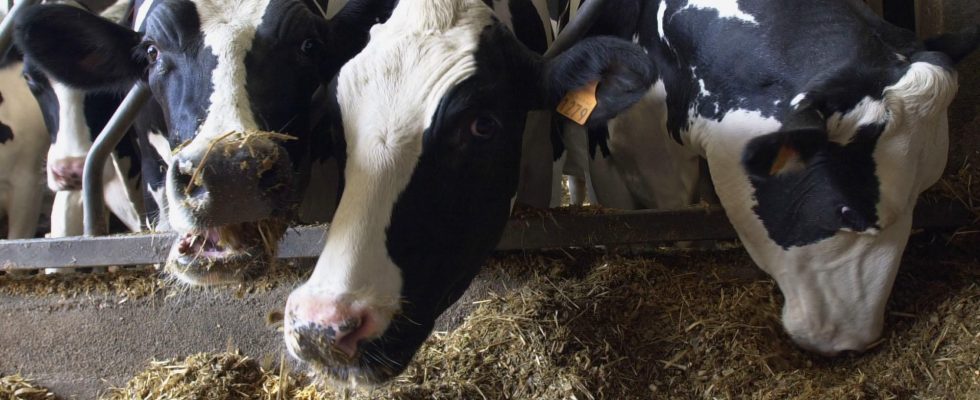Should we sound the alarm? Still invisible two months ago, epizootic hemorrhagic disease (EHD), which mainly affects cattle, is widening its furrow in France. In total, fifty-three outbreaks were recorded in the South-West on Friday October 6, according to the latest report from the Ministry of Agriculture published Friday October 6. Figures which have almost tripled in eight days. For comparison, there were 19 outbreaks of this disease as of September 29. “On site, there is an entire network of veterinarians on alert. Everyone is on war footing,” Jeanne Brugère, veterinarian and member of the Academy of Medicine, told L’Express.
Among the departments affected on October 5: Hautes-Pyrénées (30 outbreaks), Pyrénées-Atlantiques (12 outbreaks), Haute-Garonne (8 outbreaks), Gers (2 outbreaks) and Landes (1 outbreak). ), the ministry said. Since the arrival of the virus on French territory, measures have been taken to stem its spread. When a farm is infected, a security perimeter, with a radius of 150 kilometers, was set up on September 25, accompanied by an exit ban for the animals – although with several exceptions such as a trip to the slaughterhouse. The “surveillance zone” now concerns entirely or partially 15 departments.
Before settling in our South-West departments, MHE was discovered for the first time in the United States. We are in 1955. “It had been detected on white-tailed deer at the time,” adds Jeanne Brugère. Transmitted by biting midges, the disease mainly affects deer and cattle. Ruminants have no clinical signs. Among the symptoms: fever, weight loss, mouth lesions, breathing difficulties, lameness. “It’s a fairly polymorphous disease,” comments the veterinarian.
And it is in deer that MHE causes the most damage, going so far as to trigger a hemorrhagic syndrome. There are up to 90% mortality rates for certain species. In cattle, it is fatal in less than 1% of cases, according to experts. There is currently no vaccine available.
Not transmissible to humans
Should we be concerned about the speed of spread of this virus? First of all, a positive element: the disease is not contagious. In other words, infected cattle cannot contaminate each other. On the other hand, a healthy midge can contract the virus by biting an infected animal, then transmit it to another healthy animal. Other good news for the population: the disease is not transmissible to humans. For example, there is no risk if you consume animal products (meat, milk) from an infected animal. So no risk for the health of breeders or for the consumer.
“It is not a dangerous disease, but it is dramatic from an economic point of view. Breeders can no longer export their animals,” emphasizes Jeanne Brugère. Especially since this crisis comes at a time: they are in the middle of a period of exporting young cattle abroad. But at the top of the State, we want to be reassuring. The agriculture ministry is in talks with Italy, Greece and Algeria, big importers of French cattle, which closed their doors at the end of September. Despite the crisis, Spain, also affected by the virus since November 2022, agrees to import young cattle from France.
After Italy (Sardinia and Sicily), Spain and Portugal, France is the fourth country affected by the disease in Europe. Elsewhere in the world, MHE is present in North America, Australia, Asia, and Africa, particularly in the Maghreb. “This disease could have arrived in Europe through midges, because we import very few cattle from Africa”, suggests Jeanne Brugère. Among the reasons for its spread, there would also be global warming. At the microphone of France 3, Stéphan Zientara, virologist and veterinarian at the National Agency for Food, Environmental and Occupational Health Safety (ANSES), estimated that increases in temperatures contribute to “an increase in the duration of presence of insect vectors , which will therefore increase the number of infected midges. Although the spread of the virus should decrease this winter, it should not disappear. Now on French territory, experts will follow its evolution carefully.
